Ooids Aragonite Layers Dissolving - Freshwater Calcite Cement - Pleistocene (O/14/Ple/Bah)
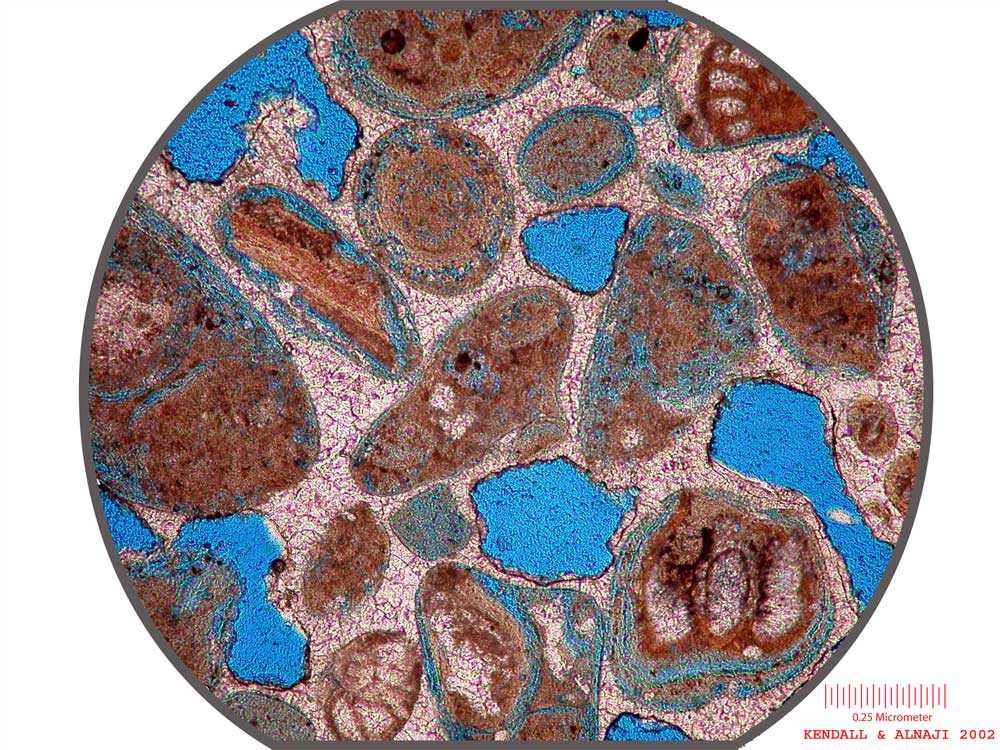 10x
|
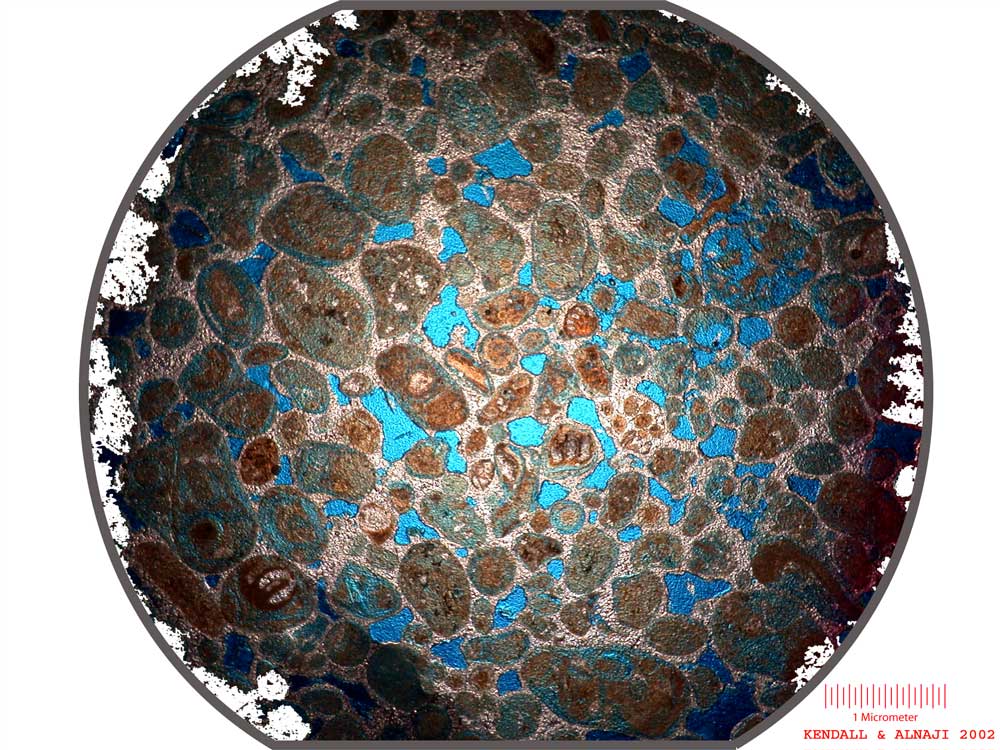 2.5x
|
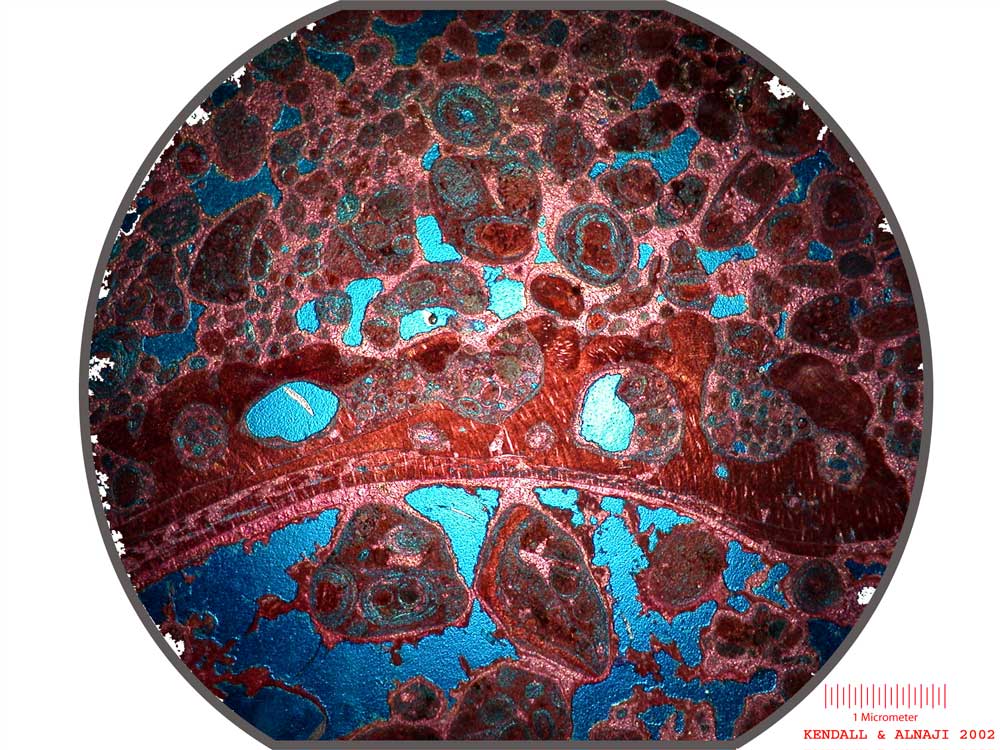 2.5x
|
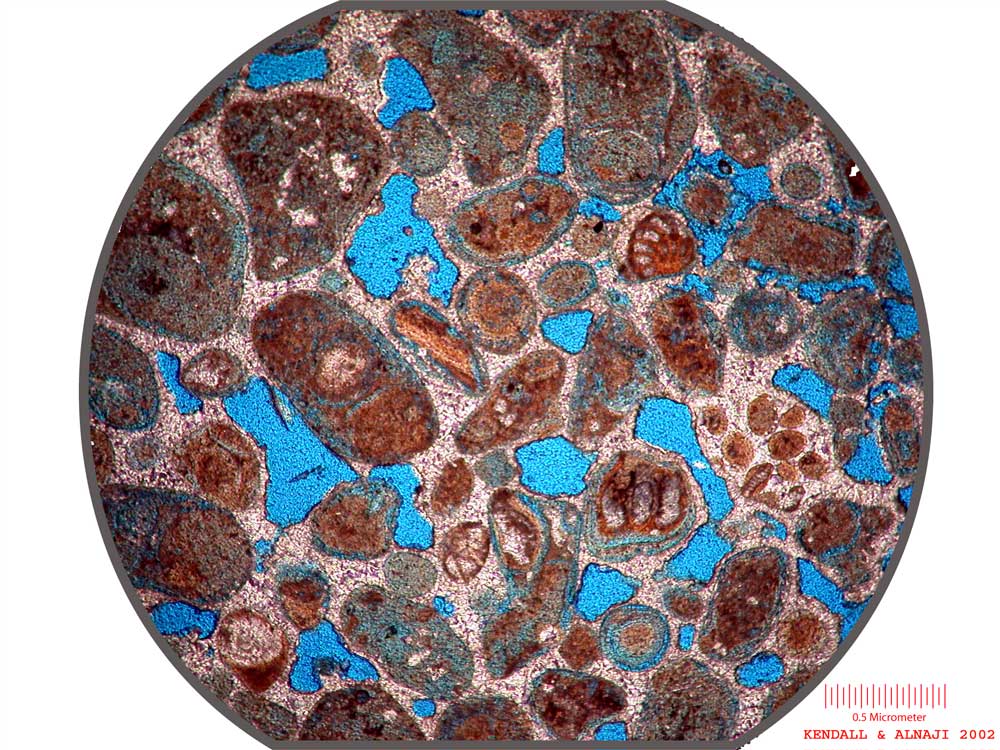 5x
|
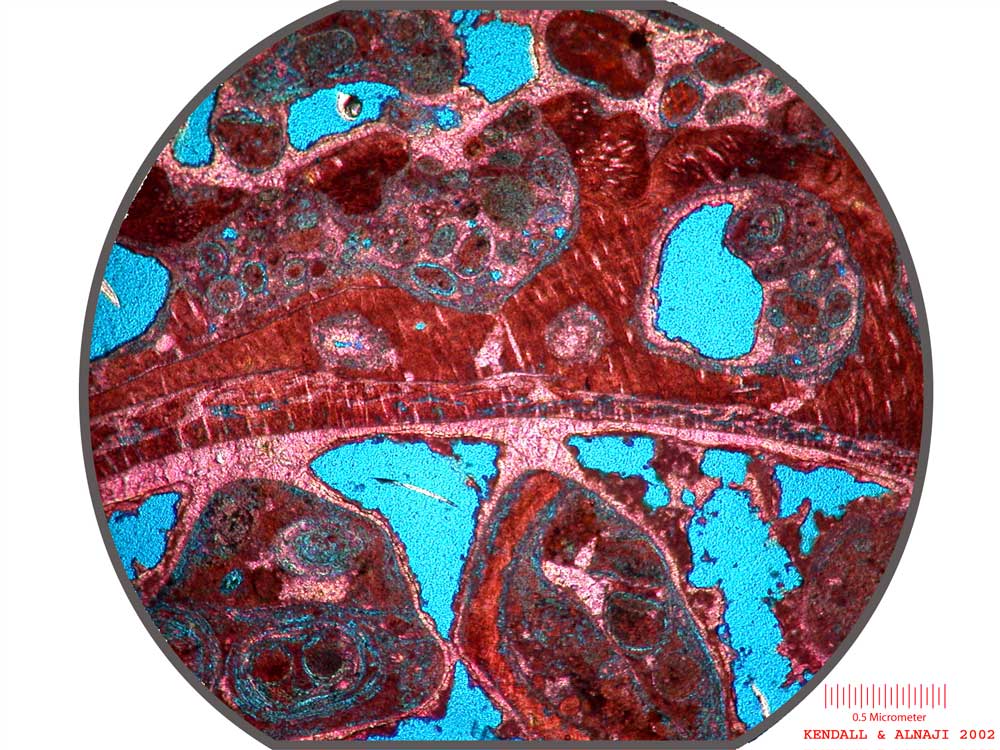 5x
|
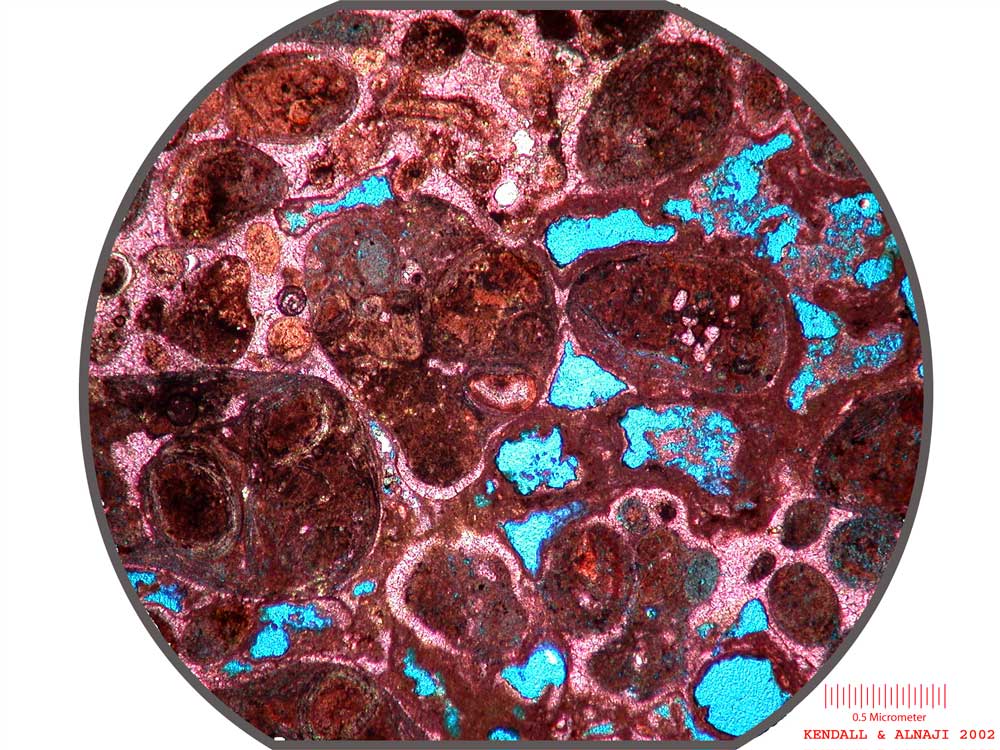 5x
|
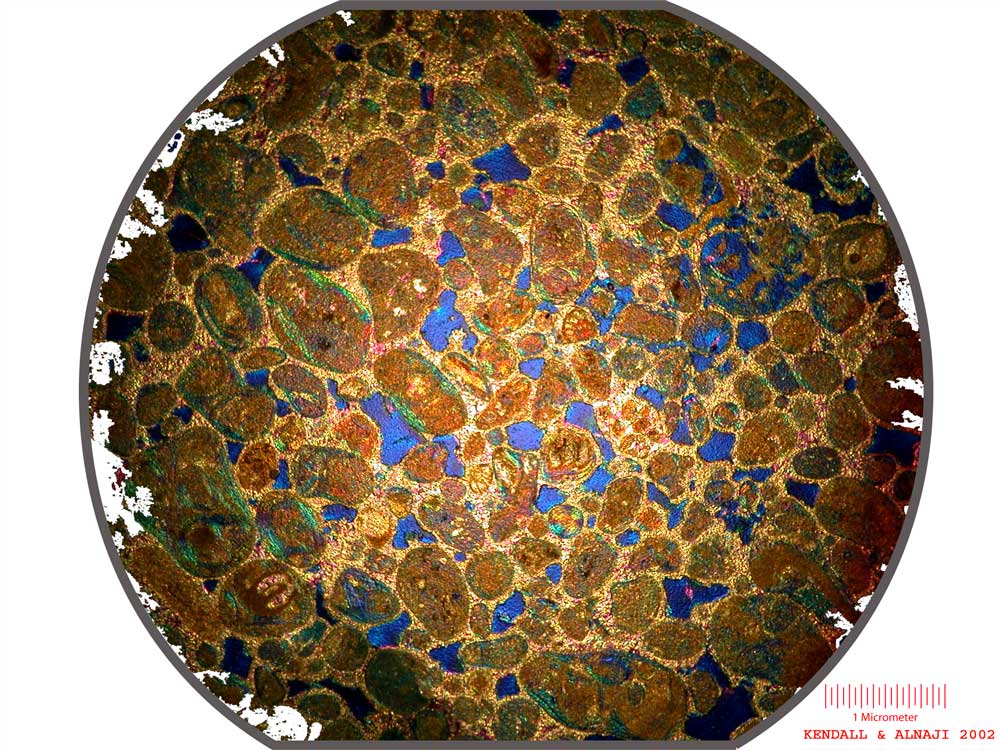 2.5 wave plate
|
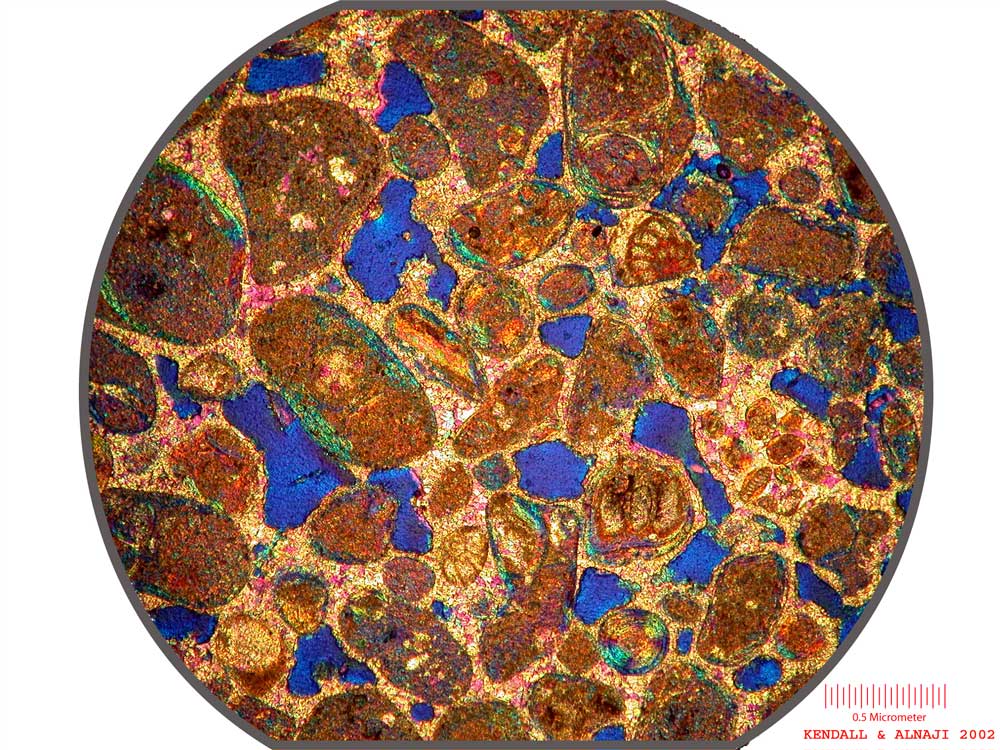 5x wave plate
|
| Outstanding feature |
Meniscus cements & concentric aragonite ooids with surface coats dissolving. Abundant bioclasts. |
| Folk Classification |
Bio oosparite |
| Dunham Classification |
Bioclastic oograinstone |
| Common Grains |
Bioclasts, ooids, botryoidal grapestones |
| Sorting |
Well sorted |
| Rounding |
Well rounded |
| Micritization & envelopes |
Micritized nucleae, often earlier ooids & botryoidal grains |
| Cement & diagenetic fabric |
Meniscus low magnesian calcite rims & locally equant spar fill. |
| Porosity |
30% Interparticle & intraparticle porosity |
| Depositional Setting |
Subaerial exposure of an open marine high energy beach sequence |
| Diagenetic history |
Cemented by marine rim with vadose freshwater calcite filling over this, while aragonitecortex of ooids dissolve |
The intial cement appears to be isopachus marine rims. This underwent diagenesis and was superimposed on by meniscus spar cements related to evaporation of freshwater charged with dissolved aragonite within these marine sediments. These grains formed on an exposed carbonate shelf and were transported by waves to their current postion in a now uplifted Pleistocene beach. The aragonite ooids have concentric layering of cortex about bioclasts and micritized peloid nulceae (some after ooids). Botryoidal grains are transported grapestones that form nucleae and are enclosed by aragonite ooid coating. Darkened spots within ooid layers are cyanobacteria colonies that cause local micritization.
Thursday, November 11, 2021